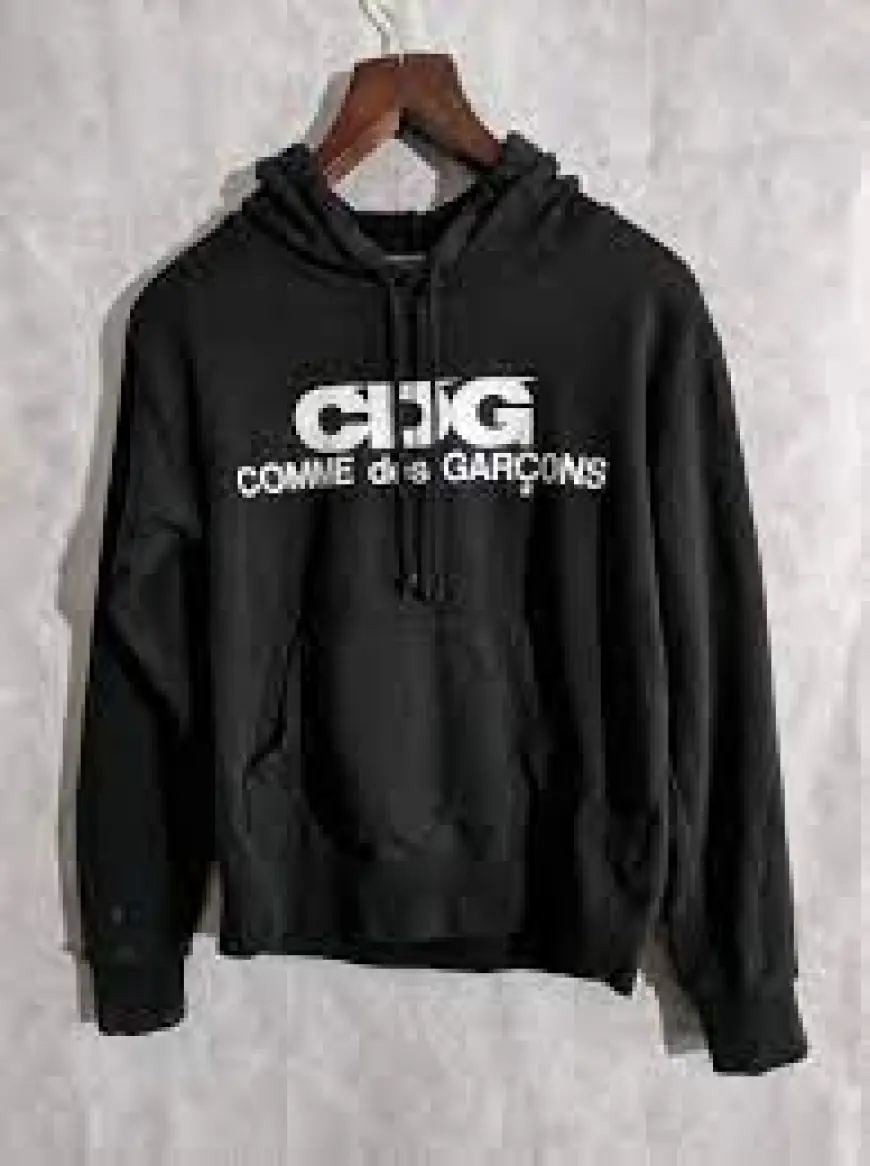Inside the Conceptual Genius of Comme des Garçons Collections
Comme Des Garcons Official Clothing Store Where You Can Buy The Best Quality Comme Des Garçons Hoodie, 2025 Collection & More And Get Free & Fast Shipping.

Rei Kawakubo’s Radical Vision
At the heart of Comme des Garçons lies the creative brilliance of Rei Kawakubo, the elusive designer who has continually redefined the very idea of what fashion can be. Since founding the brand in 1969, Kawakubo has pursued an unorthodox approach that rejects conventional beauty, structure, and even the fundamental rules of fashion. Her commedesgarconscom collections are not driven by seasonal trends or commercial appeal but by abstract ideas, contradictions, and questions about identity, existence, and the body. Each Comme des Garçons collection becomes more than a series of garments—it becomes an art installation, a philosophical statement, or a challenge to mainstream aesthetics.
Kawakubo’s conceptual genius doesn’t rely on narrative in a traditional sense. Instead, she works in themes—intangible notions such as “absence,” “broken bride,” or “lumps and bumps”—that translate into silhouettes and garments that are often shocking, perplexing, or emotionally stirring. Her design process starts with an idea, not a sketch or fabric. In many ways, Kawakubo designs concepts before clothes, and the resulting collections function as visual essays.
The Role of Deconstruction in Design
One of the foundational pillars of Comme des Garçons’ conceptual strength is its pioneering use of deconstruction. Long before it became a fashionable term, Kawakubo was dismantling fashion norms—literally and metaphorically. Clothing in her collections often appears unfinished, inside-out, or asymmetrically assembled. Seams are intentionally exposed, linings become exteriors, and traditional tailoring is ignored in favor of irregular shapes.
This aesthetic is not a rejection of craftsmanship—far from it. Instead, it is a methodical refusal to conform to expected norms. Deconstruction becomes a tool to rethink structure, meaning, and form. When Kawakubo creates a jacket with three sleeves or a dress that obscures rather than flatters the body, she challenges the very purpose of fashion as a tool for beautification. In doing so, Comme des Garçons collections provoke questions: Who is fashion for? What is beauty? Can clothes be emotional, even confrontational?
Themes as Philosophical Frameworks
Comme des Garçons collections are often built around themes that are abstract and sometimes deliberately obscure. For instance, the Spring/Summer 2014 collection titled “Not Making Clothing” was not about fashion in any traditional sense. It was a series of sculptural forms meant to question the boundaries between fashion, sculpture, and identity. Similarly, the Autumn/Winter 2015 collection titled “Blood and Roses” combined violent motifs with romantic elements, creating a conceptual tension between pain and beauty.
These themes are not just decorative or metaphorical—they are Kawakubo’s language. They allow her to comment on everything from gender identity to mortality to capitalism. Comme des Garçons shows are rarely accompanied by detailed notes, leaving critics and viewers to interpret freely. In this ambiguity lies their power. They don’t instruct; they challenge. They open space for imagination, confusion, dialogue, and reinterpretation.
Rejection of Conventional Beauty
Another defining trait of Comme des Garçons’ collections is their refusal to cater to traditional standards of beauty. Kawakubo does not design clothes to flatter the body in conventional ways. Instead, she often distorts the body with padding, exaggeration, and unexpected volumes. This was evident in the groundbreaking Spring/Summer 1997 collection, often referred to as the “Lumps and Bumps” collection, in which models wore padded garments that created surreal bodily shapes.
The response was polarizing. Critics called it grotesque or absurd, while others hailed it as revolutionary. Kawakubo was not trying to make her models look beautiful—she was exploring the physical form as a canvas for emotion, distortion, and imagination. For her, fashion isn’t about pleasing the eye. It’s about making the viewer feel, think, and react. This approach has continued to influence generations of designers who now explore imperfection, irregularity, and abstraction in their own work.
Fashion as a Medium of Expression
Comme des Garçons operates in a space where fashion becomes a medium equal to film, literature, or contemporary art. Kawakubo’s collections often comment on societal issues, the nature of existence, or the experience of womanhood. Unlike many designers who create around trends or nostalgia, Kawakubo moves in the opposite direction—creating work that is forward-thinking, conceptually rich, and unafraid to alienate or confuse.
In this way, Comme des Garçons shows are akin to exhibitions. The garments themselves are not always wearable in the traditional sense. Some are too large, too abstract, or too symbolic. But that is the point. Kawakubo is not selling clothes—she is delivering an idea, a critique, or a vision. When she once said, “I want to make clothes that have never been seen before,” she wasn’t referring to novelty. She meant that fashion must invent, not repeat.
The Impact of Comme des Garçons’ Conceptualism
The conceptual genius of Comme des Garçons has not gone unnoticed. Rei Kawakubo has received numerous accolades and global recognition, including the rare honor of being the subject of a solo exhibition at the Metropolitan Museum of Art’s Costume Institute in 2017. Titled “Art of the In-Between,” the exhibit explored Kawakubo’s unique approach to space, duality, and the conceptual versus the commercial.
More importantly, her influence permeates across fashion. Designers such as Martin Margiela, Yohji Yamamoto, Rick Owens, and even more mainstream houses have drawn from Kawakubo’s courage to CDG Long Sleeve challenge the expected. Today, conceptual fashion is more accepted, but Kawakubo remains a singular force who resists definition.
Comme des Garçons and the Future of Fashion
In a world increasingly driven by social media aesthetics, consumerism, and fast fashion, the work of Comme des Garçons feels more urgent than ever. It reminds us that fashion can be deep, challenging, uncomfortable, and transformative. The brand continues to build bridges between fashion and art, commerce and criticism, tradition and radicalism.
For Rei Kawakubo, every collection is an experiment. She does not explain her work, and she does not cater to market demands. This refusal to compromise is what gives Comme des Garçons its integrity, power, and timelessness.
The conceptual genius of Comme des Garçons does not lie in innovation alone—it lies in the relentless pursuit of originality, honesty, and resistance to conformity. In a landscape where sameness is often rewarded, Comme des Garçons dares to be different, reminding us that fashion can—and should—be a vehicle for thought, rebellion, and reimagination.
What's Your Reaction?
 Like
0
Like
0
 Dislike
0
Dislike
0
 Love
0
Love
0
 Funny
0
Funny
0
 Angry
0
Angry
0
 Sad
0
Sad
0
 Wow
0
Wow
0



















































